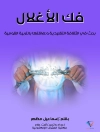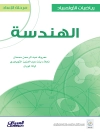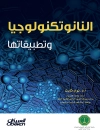As demands for accountability escalate, assessment continues toevolve as a central aspect of student affairs administration.Experience clearly indicates that without a robust portfolio ofassessment activities, the services, programs, and activities of astudent affairs division are at risk of being reassigned to otherorganizational units on campus–or, in a tight budgetaryenvironment, being eliminated.
This sourcebook reminds student affairs educators of theimportance of developing an assessment program and explores topicsthat will add depth and richness to such a program. From specificmetrics to broad strategies for developing collaborative activitiesinvolving academic and student affairs, it shows how to integratevaluable resources into the assessment process and how to use thatprocess to enhance the student experience. The authors also takethe largest view, offering advice on developing an institutionalculture of assessment and planning future actions that will bestserve students during their collegiate years.
This is the 142nd volume of this Jossey-Bass highereducation quarterly series. An indispensable resource for vicepresidents of student affairs, deans of students, studentcounselors, and other student services professionals, New Directions for Student Services offers guidelines andprograms for aiding students in their total development: emotional, social, physical, and intellectual.
Зміст
EDITOR’S NOTES 1
John H. Schuh
1. Challenges of Assessment in Student Affairs 5
Gregory S. Blimling
How student affairs professionals can develop comprehensiveassessment programs in the current climate of accountability ispresented in this chapter.
2. The Role of the Assessment Coordinator in a Division of Student Affairs 15
Carolyn H. Livingston, Jonathan D. Zerulik
The emerging role of assessment coordinators in student affairsdivisions is described in this chapter.
3. Using the CAS Standards in Assessment Projects 25
Laura A. Dean
This chapter presents an overview of the use of professionalstandards of practice in assessment and outlines a model forconducting program self-studies.
4. From Classroom to Practice: A Partnership Approach to Assessment 35
J. Patrick Biddix
A model for bridging graduate assessment course work anddivisional student affairs assessment efforts is provided alongwith considerations for implementation.
5. Collaborating on Assessment of the Undergraduate Student Experience 49
Melissa S. Shivers, Sally J. Mc Millan
This chapter describes selected collaborative assessmentinitiatives involving academic and student affairs at the University of Tennessee, Knoxville.
6. How Assessment Can Advance Efforts to Enhance Undergraduate Student Persistence 61
Ann M. Gansemer-Topf
Despite the significant amount of research related to studentpersistence, institutions must develop and implement assessmentpractices that account for their unique mission and purpose. Thischapter describes the role of assessment in enhancingpersistence.
7. Developing and Using Dashboard Indicators in Student Affairs Assessment 71
Joshua J. Mitchell, Andrew J. Ryder
This chapter presents the use of dashboards in student affairs, including examples of key indicators and considerations fordeveloping and implementing these tools.
8. Measuring the Second-Year Transformational Experience Program(STEP) at The Ohio State University 83
Lance C. Kennedy-Phillips, Kellie J. Uhrig
This case study describes the role of assessment in a programfor second-year students at The Ohio State University.
9. Developing a Culture of Assessment in Student Affairs89
John H. Schuh
Elements that contribute to developing a culture of assessment instudent affairs are presented.
10. Afterword: Considerations for Future Practice of Assessment and Accountability 99
Marilee J. Bresciani
Ideas and concepts about the future of assessment in studentaffairs are discussed.
INDEX 107
Про автора
JOHN H. SCHUH is director of the Emerging Leaders Academy and is distinguished professor emeritus at Iowa State University. He is the author of Assessment Methods for Student Affairs, from Jossey-Bass.












